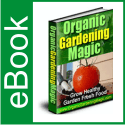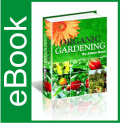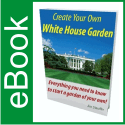How To Plan A Garden Right
How To Plan A Garden Right
Article by John Pawlett
Gardening is a hobby that brings joy, entertainment, and a better quality of life. It is a creative activity, the result of which is a more aesthetically appealing home.
Thoughtful planning of a garden starts with the type ofgarden you would like to have. Deciding on a type ofgarden is essential defore choosing which designelements to include. Will your garden be just a place to plant a bunch of flowers, which will blossom only during the growing season? Or would you rather have a thoughtfully-chosen herb garden? Or maybe just a vegetable plot?
Another issue to consider is the climate in your location. It can be surprising how little we know about the facts, figures and statistics of the weather where we live. You may want to consult an online map to get statistical data regarding climate elements like rainfall per month or average temperatures.
The next step, after having decided about the type of garden and after investigating the local climate, is to figure out the plants that you would like to grow in your garden. Think of plants that are suitable for the duration of the growing season in your location and that will survive the changes in temperature, typical for your location.
The thoughtful planning of a garden involves one more factor to consider – how much shade is necessary for each of the plants. You need to make sure that there is enough light all over the places you plan to plant your garden.
When you have finished with planning in theory, it is time to start planning the plots in your garden. Again, think fora good plan – one that brings joy, is easy to keep to, andat the same time efficiently uses the available space.
Think about where to place plants that require a lot ofsunlight. The best place for such plants is away frombuildings and taller trees because these block the light atdaytime.
Deciding which plants to grow near the house, and whichshould be in the open also requires some thought. If you prefer the sunshine streaming through your windows, then you are best not to have bulky trees or bushes near the house, where they will block the sunlight.
If you have decided that you will be growing herbs andvegetables, the best place for them is near the house. When they are near the house, it is more likely that you will be using them for cooking. Besides convenience, you should also think about the location of vegetables as far as their needs for sunlight are concerned. This is especially true if yours is mainly a vegetable garden.
Last, but not least, take into account your personalpreferences, when designing a garden. If there areparticular extras you would like to have, for instancewinding pathways or gazebos, include them in the initial design of the garden. Your outdoor garden is constrained only by the limits of your creativity and the growing season in your location.
About the Author
Green Gardens runs an informative Gardening site that looks into all aspects of Gardens from Plants to Figures.To find out more visit Green Gardens

 January 15, 2012
January 15, 2012 







